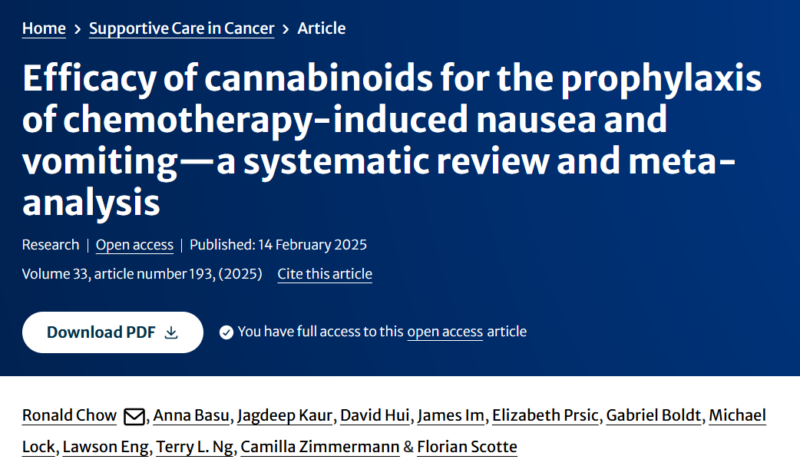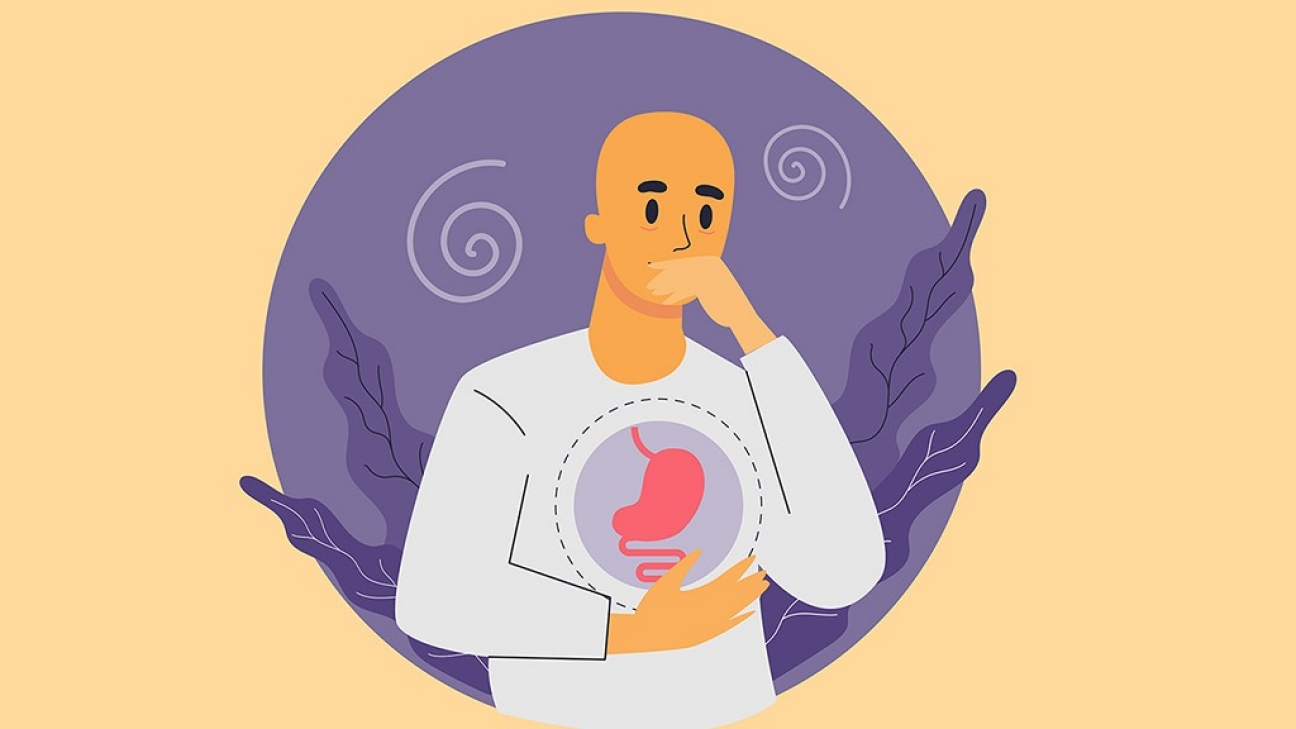A paper by Ronald Chow et al. was published in Supportive Care in Cancer, titled:
Authors: Ronald Chow, Anna Basu, Jagdeep Kaur, Camilla Zimmermann, Florian Scotte et al.

Chemotherapy-induced nausea and vomiting (CINV) is a common and debilitating side effect of chemotherapy, affecting over 50% of patients receiving highly emetogenic chemotherapy and over 40% receiving moderately emetogenic regimens. If not adequately managed, CINV can lead to poor quality of life, treatment non-adherence, and compromised oncologic outcomes.
Despite advancements in prophylactic antiemetics, nausea remains a challenge. Cannabinoids have been explored as potential antiemetic agents, but past studies often compared them to outdated treatment regimens. This meta-analysis aims to evaluate the relative efficacy of cannabinoids for CINV prophylaxis using updated evidence.
A comprehensive literature search identified 888 records, with 26 randomized controlled trials ultimately included in the meta-analysis. The studies, published between 1975 and 2024, primarily investigated adult patients, with cannabinoids administered as tablets, sprays, or intramuscular injections. The most common control treatments were placebo and prochlorperazine.
Meta-analysis endpoints included complete response (no nausea, vomiting, or use of rescue medication), no nausea, no vomiting, and no use of rescue medication. A DerSimonian-Laird random effects model was used for statistical analysis, and heterogeneity was assessed using I².
The results showed that cannabinoids were significantly more effective than placebo for overall CINV control (RR 2.65, 95% CI 1.70–4.12, I² = 0.00%). However, when compared to active antiemetics like prochlorperazine, metoclopramide, and haloperidol, cannabinoids did not show a significant advantage.
Specifically, against prochlorperazine (the most common comparator), cannabinoids had an RR of 1.52 (95% CI 0.79–2.90, I² = 65.14%), indicating no clear superiority. Subgroup and sensitivity analyses confirmed the stability of findings, and no publication bias was detected.
In conclusion, cannabinoids demonstrate superior efficacy to placebo in controlling CINV but do not appear more effective than standard antiemetics. Given the heterogeneity and potential bias in some studies, further high-quality trials are needed to establish their definitive role in CINV management.
Read more posts about CINV on oncodaily.com.
